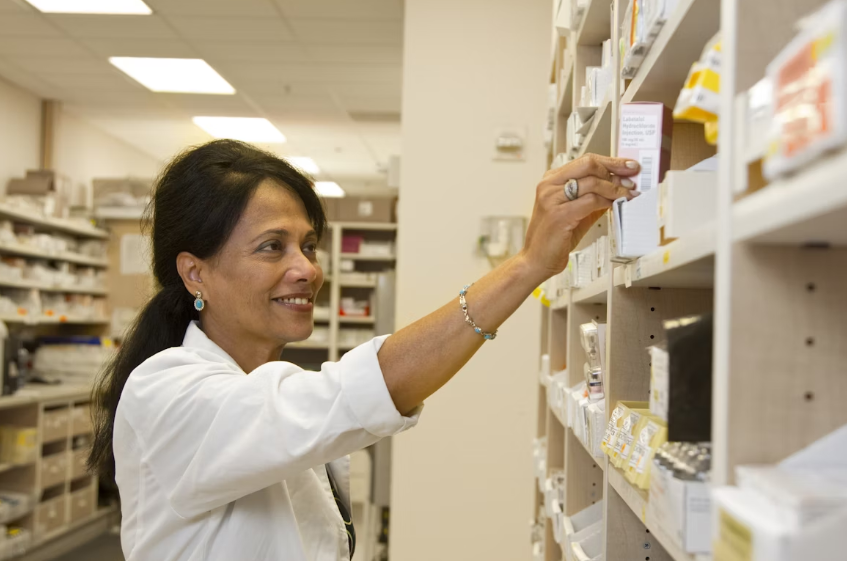As pharmacies across the country face staffing shortages, one job is rising to prominence: pharmacy technician. These behind-the-counter professionals play a vital role in keeping operations smooth—from handling prescriptions and insurance claims to assisting pharmacists and ensuring patient safety.
But while demand is growing, the number of qualified applicants isn’t keeping pace. If you’re considering a healthcare career without years of school, now may be the perfect time to enter the field. Here’s what it takes to become a pharmacy technician—and why so many local pharmacies are hoping people like you will step up.
Start With Confidence: Why PTCB Practice Tests Are Essential
Before you can start working in most states, passing the Pharmacy Technician Certification Exam (PTCE), administered by the Pharmacy Technician Certification Board (PTCB), is a crucial milestone. And preparation begins with practice.
A PTCB practice test does more than help you memorize facts—they teach you the exam format and expose areas of weakness. Many aspiring technicians underestimate how technical the PTCE can be. The exam covers pharmacology, medication safety, order processing, federal laws, and more—all under a strict time limit. Without simulated testing, it’s easy to get blindsided.
Sites like PTCB.org and apps like Pocket Prep offer timed quizzes, flashcards, and full-length mock exams. Experts recommend taking at least three to five practice tests under real-time conditions to build stamina and reduce anxiety. Not only does this boost your chances of passing, but it also instills a mindset of precision that pharmacy work demands. In today’s competitive job environment, arriving certified and exam-ready sets you apart from applicants who are still struggling to meet minimum requirements.
Understand Certification Vs. Registration: Know What Your State Requires
The path to becoming a pharmacy technician varies significantly by state, and understanding the difference between certification, registration, and licensing can make or break your progress.
Certification usually refers to passing a national exam like the PTCE or the NHA’s ExCPT. States like Arizona or Texas require certification before you can work, while others only require registration. Registration typically means submitting your name and background check to your state board of pharmacy—this may not include testing, but it often mandates training or proof of employment.
Meanwhile, some states mandate licensure, which can involve both a background check and continuing education. For example, California requires a combination of education, certification, and fingerprinting to get licensed.
If you’re not sure where to start, head to your state’s Board of Pharmacy website. Getting this wrong can delay your job application or cause you to miss out on higher-paying opportunities. Employers are more likely to hire candidates who already meet state requirements so they can start working immediately.
Choose The Right Training Program: Online Vs. In-Person Education
One of the most flexible parts of becoming a pharmacy technician is the ability to choose your training format. Depending on your schedule, budget, and learning style, you can opt for in-person classes at a community college, online programs, or hybrid certifications.
In-person programs often include hands-on lab experience and may connect you directly with local pharmacies for externships. These can be excellent for learners who prefer structured environments and face-to-face instruction.
Online courses, such as those from Penn Foster or CareerStep, allow you to study at your own pace while still preparing for the PTCE. Many include interactive simulations, instructor feedback, and career support. They’re ideal for working adults or parents looking to change careers without quitting their current jobs.
Look for programs that are accredited by ASHP/ACPE—the American Society of Health-System Pharmacists or the Accreditation Council for Pharmacy Education. These accreditations often signal that the program meets industry standards and qualifies you for externships or employer partnerships. A good program doesn’t just help you pass the test—it prepares you to thrive in a real pharmacy setting.

Consider Your Workplace Options: Retail, Hospital, Or Specialty Pharmacies
Once certified, you’re not limited to retail chains like CVS or Walgreens. Pharmacy technicians have more options than ever before—and each setting offers a unique career path.
Retail pharmacies are often the first job stop. They provide steady hours, patient interaction, and the opportunity to develop customer service skills. However, they can be fast-paced and occasionally stressful, especially during public health crises like flu season or COVID-19 surges.
Hospital pharmacies, in contrast, offer a more clinical environment. Here, technicians compound medications, prepare IVs, and work closely with healthcare providers. These positions often require additional training but come with higher pay and more structured shifts.
Specialty pharmacies, such as those focusing on oncology, fertility, or infusion therapy, are also growing. These roles require precision and often involve coordinating with insurance companies and patient advocates. If you’re looking for long-term advancement or a niche healthcare role, these can be a great fit.
Today’s pharmacies aren’t just pill counters—they’re care hubs. The more settings you’re open to, the better your chances of landing a stable, well-paid role with growth opportunities.
Prepare For Long-Term Growth: Career Paths Beyond The Counter
Pharmacy technician roles can lead to long-term careers in healthcare—even if you don’t want to be a pharmacist.
Lead technicians, inventory specialists, and insurance coordinators are all positions that offer better pay and more autonomy within pharmacy departments. With experience and continued education, you could also become a pharmacy buyer, a sterile compounding technician, or a trainer for new hires.
Some techs move into pharmaceutical sales, research labs, or healthcare administration. Others return to school to become nurses, physician assistants, or pharmacists—using their experience as a launching pad. Employers often look favorably on former techs applying to medical or pharmacy schools due to their real-world experience handling medications and patient care.

Wrapping Up
The shortage isn’t just a labor issue—it’s a public health concern. Pharmacy technicians are often the first point of contact for patients asking about side effects, vaccine appointments, or insurance rejections. Without them, pharmacies slow down and patient care suffers.
But that’s where you come in. The path to becoming a pharmacy technician is relatively short—typically 6 to 12 months—and the payoff is real: national average salaries range from $37,000 to $48,000, with higher rates in hospitals or urban areas. With a low barrier to entry, strong job security, and the chance to make a difference, this is one healthcare role worth exploring.




















































































